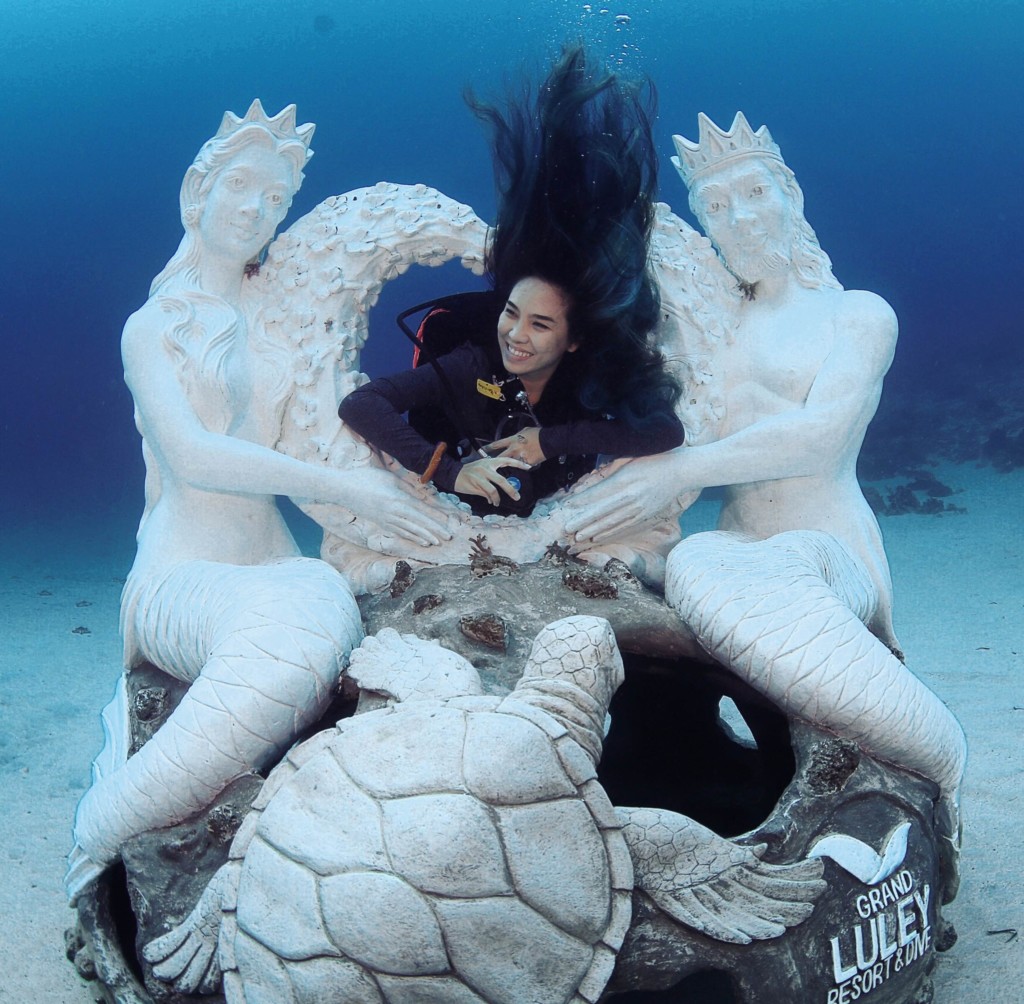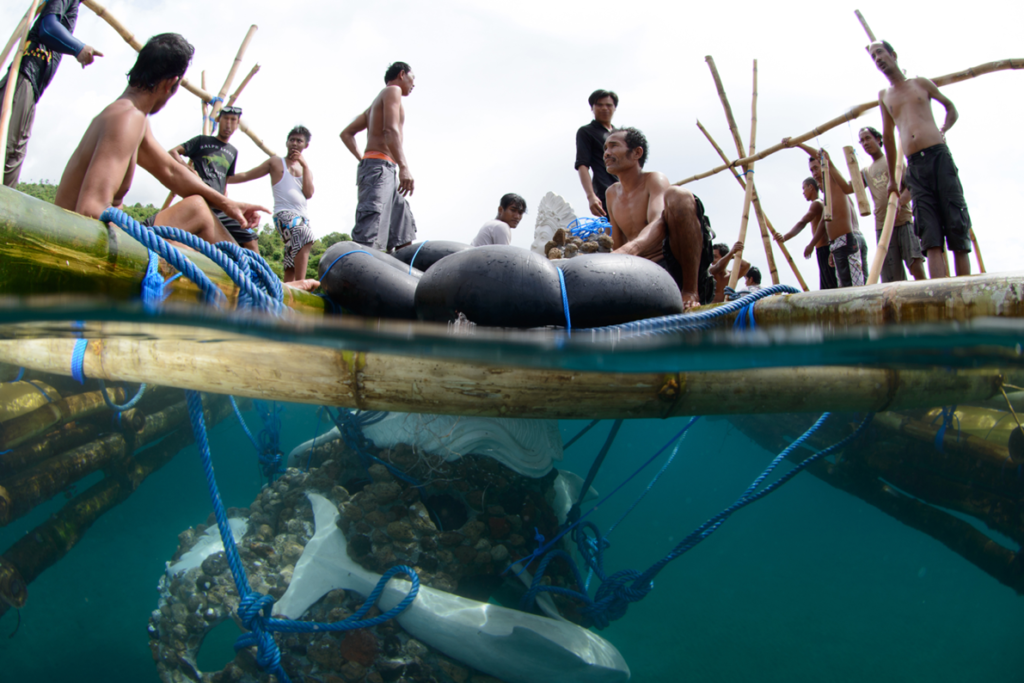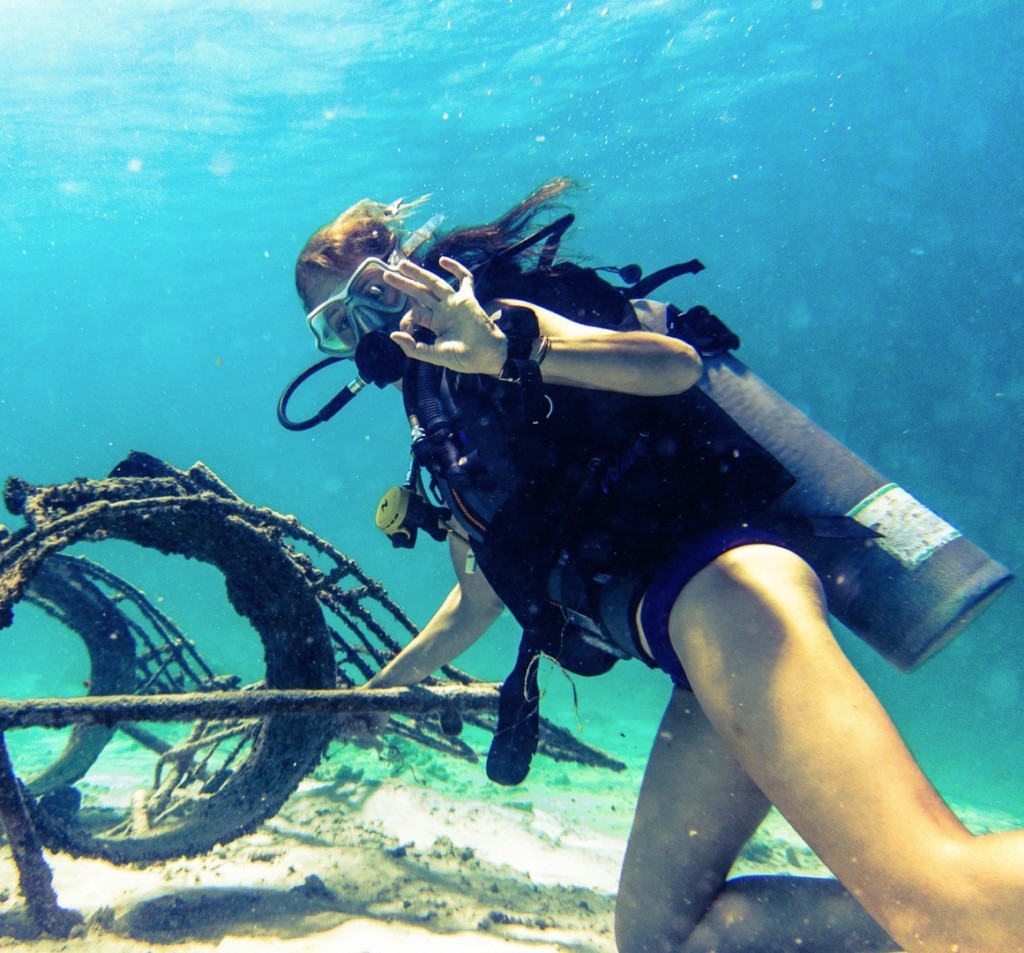Marine Life & Conservation
Serendipity
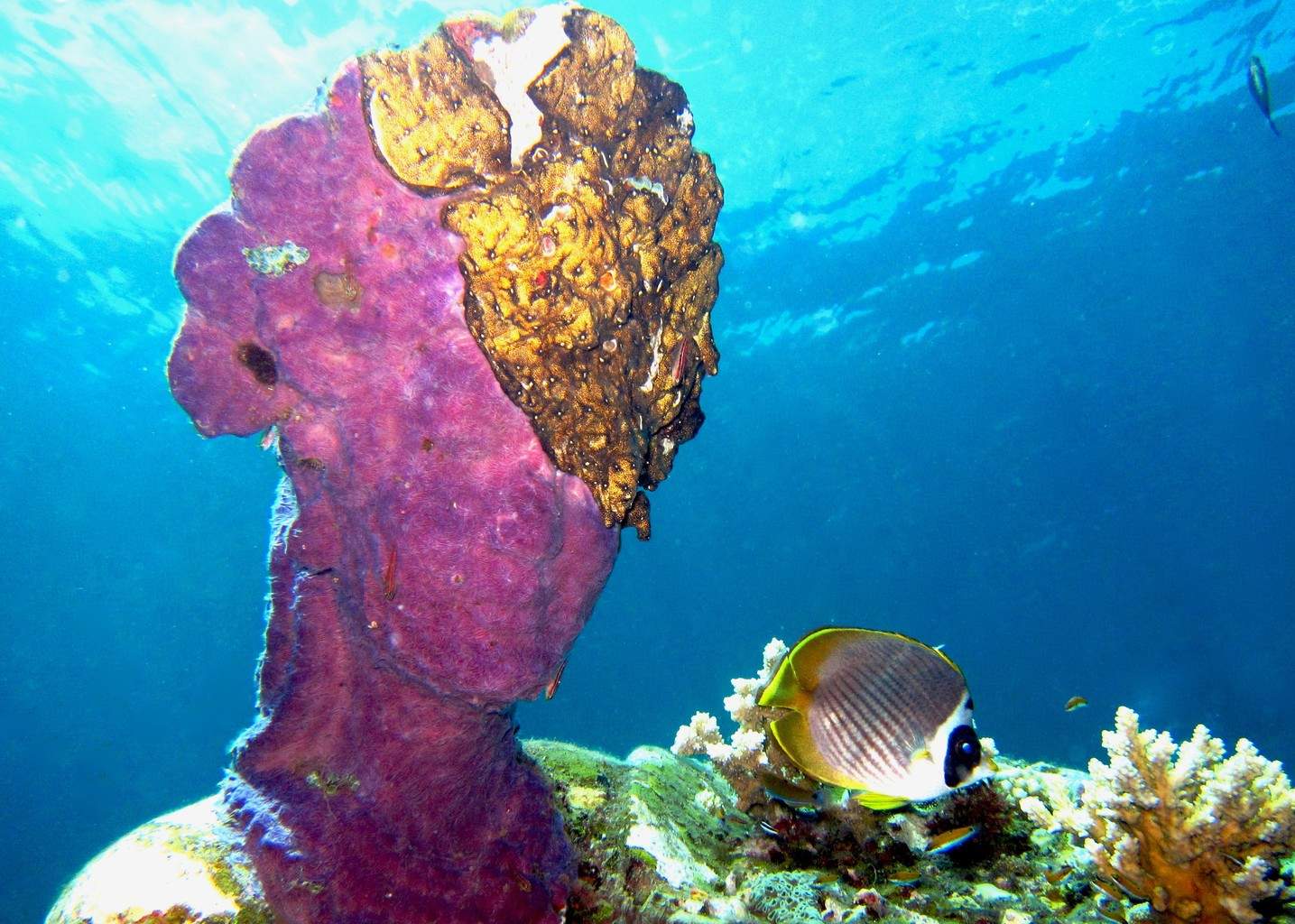
Serendipity means a “fortunate happenstance” or “pleasant surprise”. The New Oxford Dictionary of English defines serendipity as the occurrence and development of events by chance in a satisfactory or beneficial way, understanding the chance as any event that takes place in the absence of any obvious project.
This was exactly how I came to connect with Ocean Crest Alliance who the Marine Foundation are forming a new partnership with. I was asked by the TerraMar project to be a guest host for the Daily Catch on Global Ocean TV. As with any request I receive, I researched the organisation and saw the great work they are doing. I would recommend you help this cause and that of our seas and get yourself an ocean passport.
I wanted to better understand what they would expect from me as a guest presenter, so I watched a number of previous episodes and was fortunate enough to discover one featuring Joseph Ierna, the founder of Ocean Crest Alliance. OCA is a 501(c)(3) non-profit organisation, registered in the United States and the Bahamas and was established to create awareness, to inspire, and to educate others about our Earth and Oceans and to illustrate the real issues we all face today. Joseph like myself has fallen in love with our Oceans and Seas and as I watched their Global TV episode I had that tingling feeling I get when I know something serendipitous is brewing.
I rode the wave, as they say, and looked up their website to learn their goal is ‘to Honor, Protect, and Restore the Health of the Worlds Oceans and the life of the Earth’s Systems through Conservation, Research, Education, Science and Technology programs’. These objectives share much in common with those of the Marine Foundation’s work and are very much in alignment with my own dreams. They were just lacking the key word that is the essence of our unique approach, creativity, and I knew I wanted to connect with them.
As I read on, I was very happy to learn they have worked closely with the community and government in establishing the 215,000 acre Marine Protected Area called Long Island Marine Management Area, or LIMMA for short. LIMMA from the onset has engaged the locals and are looking at some very innovative ways to establish long term economic based solutions. This innovative approach immediately struck me.
By unfortunate chance it has been discovered that the traditional approach to funding and implementing an MPA is fraught with problems, often implemented through a top down approach. There is insufficient socialisation and people resent the laws and restrictions that they feel are implemented by outsiders, taking away their livelihoods. “ A careful consideration of the receptivity of the fishing communities to MPAs is fundamental for their long term success.” (Agardy et al. 2003).
Even a seemingly windfall success of large amounts of funding has its downfalls, with initial investments going into complex infrastructures that cannot be sustained longterm, either economically or by an untrained local community. In the long term, leaving these MPA areas underfunded with no way to implement the laws and a local community who are not invested. I saw this first hand at Bunaken where we installed ‘the love mermaids” last November. This MPA was once considered such a success but I saw first hand evidence that dynamite fishing was still occurring; the reefs were suffering a decline in health and even though large funding had paid for boats and staff to enforce fishing restrictions, they were too scared to go out and defend their seas.
In a conversation I later had with Joseph (once I had asked Robert Foos of the Terra Project to connect us), we discussed that with people so desperate and so much money able to be made in illegal fishing, It is very complicated to enforce fishing restrictions… and dangerous.
An MPA’s best asset is a vested local community; if they feel empowered and positioned to benefit from its success, there is an inherent and genuine love for their heritage that is hard to buy! I hate being told what to do so I can only imagine what it must feel like for a fisherman who’s family has fished for generations that now they must now stop.
The Economist William Russell Easterly who specialises in economic development wrote an interesting book called The White Man’s Burden (the title refers to Rudyard Kipling’s famous poem of the same name). Controversially, Easterly suggests that ’messianic do-good missions are ultimately modern reincarnations of the infamous colonial conceit.’ I have seen many so called experts imposing theories thought out in institutions far away from the sea!
I am not suggesting that grants should be extinguished. We certainly rely on them, but valuing the local community and their wisdom and love for their sea is essential. A fisherman understands when their livelihood is under threat and like any father wishing to feed his family, I think learning how to take control and feel like a decider in the fortune of their own destiny is something that when not permitted brings tears to my eyes.
I love the OCA’s Lionfish Fisheries Program which has been developed to bring direct and immediate economic opportunity for large numbers of the local community. The program shows that removal of lionfish is an effective management tool to protect and preserve the biodiversity of the Bahamas’ native fish life, and a much welcome and needed addition to the local economy! These are an invasive species that have come into the Caribbean from The Indo Pacific in the hull of ships in their Ballast water. Ballast water is water carried in ships’ ballast tanks to improve stability and balance. The water is taken into the hull or discharged when cargo is unloaded or loaded to maintain weight or when a ship needs extra stability in foul weather. When ships take on the ballast water, plants and animals that live in the ocean are also picked up. The cargo travels around the Globe and the same animals are then released into foreign seas. The Lionfish look stunning but are predators, and destroy the eco-system’s delicate balance in their new marine home. They are challenging to catch as they have toxic spines but they are actually incredibly good to eat. On my recent trip to Belize I came across a jewellery artist who was cleverly making stunning earrings and other items from the tails and fins.
OCA is also establishing a Coral Nursery Restoration Program, and this is where The Marine Foundation comes in. We bring a uniquely creative approach; Our Living sculpture in the Sea program has proven highly effective as an aspect to a successful marine management strategy. I feel it was by a seemingly unfortunate events that I was even able to conceive the Living Sculpture in the sea Program. During my research it was divers love of wreck diving that seeded the concept. Ships that have come to an untimely end and sunk to the bottom of our seas only to become thriving marine eco-systems.
‘The notion of serendipity is a common occurrence throughout the history of scientific innovation such as Alexander Fleming’s accidental discovery of penicillin in 1928. Innovations presented as examples of serendipity have an important characteristic: they were made by individuals able to “see bridges where others saw holes” and connect events creatively, based on the perception of a significant link.’
Our times are calling to each and every one of us to be creative and innovative. We desperately need to realise we have some major challenges to face in our beautiful world both above and below and I am thrilled to announce The Marine Foundation’s new partnership with Ocean Crest Alliance.
“I have noticed that even those who assert that everything is predestined and that we can change nothing about it still look both ways before they cross the street.” – Stephen Hawking
Marine Life & Conservation
Shark Trust launches Oceanic 31 Shark Art Auction

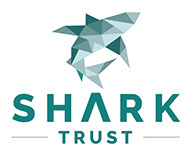 After a two-year tour of UK art galleries, community spaces and aquariums, the Shark Trust’s acclaimed Oceanic31 exhibition takes its final bow at the Royal Geographical Society later this month. And the unique collection of artwork, depicting 31 species of oceanic sharks and rays, donated by 31 artists, is now open for bids from art lovers and shark enthusiasts. The online auction, launched today, will close on the 7th December at 8pm (BST). The money raised will support the Shark Trust Oceanics Programme.
After a two-year tour of UK art galleries, community spaces and aquariums, the Shark Trust’s acclaimed Oceanic31 exhibition takes its final bow at the Royal Geographical Society later this month. And the unique collection of artwork, depicting 31 species of oceanic sharks and rays, donated by 31 artists, is now open for bids from art lovers and shark enthusiasts. The online auction, launched today, will close on the 7th December at 8pm (BST). The money raised will support the Shark Trust Oceanics Programme.
People can now bid on 27 of the artworks by visiting this website:
https://superstars-auctions.com/sharktrustauction
It is a chance to own a beautiful piece of original art and to support the Shark Trust. The timing of the auction also means that these would make a very special Christmas gift for any shark-lover.
- Bigeye Thresher Shark by Janina Rossiter
- Carcharodon carcharias by Jimmy Higgs
- Croc VR 2030 by Tom Mead
- Oceanic Whitetip by ATM
- Silky Street by ScapaJoe
The diversity of pieces mirrors that of the sharks and rays they represent. You can bid on paintings, digital creations, sculptures, mixed media and more. You can pick your favourite artist or species of shark. Or you can select the perfect artwork to make a statement in your home or office. Whichever you choose, you will be supporting the work to protect these amazing animals.
One of the pieces of art has been selected to be auctioned live by Steve Backshall at the For the Love of Sharks event at the Royal Geographical Society in London on the 29th November. In addition to this, two further pieces will be raffled at this event, giving people a chance to win an incredible piece of shark art. For the Love of Sharks is the Shark Trust’s flagship evening. A night to celebrate sharks. Steve Backshall is the headline speaker at this event that will see other prominent shark advocates join him on stage.
Tickets for the event can be snapped up here:
https://thesharktrust.org.uk/Event/flos24
Those that would like to see the Oceanic 31 exhibition have one final chance. It is being displayed at the Pavilion at the Royal Geographic Society from 26th November until the 7th December. Entry is free.
Find out more here:
https://www.rgs.org/events/upcoming-events/oceanic-31
Paul Cox, Shark Trust CEO, Said “This exhibition has given us the opportunity to reach out to a new audience. And inspire more people with the wonderful sharks and rays on which our Big Shark Pledge campaign is based. We are immensely grateful to the 31 artists who have worked so hard to create these works.”
Bid for your favourite Oceanic 31 artwork here:
https://superstars-auctions.com/sharktrustauction
Banner Image: Smooth Hammerhead by Alicia Hayden
Marine Life & Conservation
Meet Steve Backshall in the Bite-Back Prize Draw

Until 28 November, prizes worth a massive £10,000 – including experiences, products and tuition – feature in a line-up of items that can be won for £5 in an online prize draw to celebrate Bite-Back Shark & Marine Conservation’s 20th anniversary and help generate crucial funds for the future.
Top of the list of prizes is the chance to spend time with adventurer and wildlife expert Steve Backshall, a workout session with Nat Geo star Aldo Kane, a kayaking trip alongside white-water expert and diver Sal Montgomery and a Zoom call with ‘shark whisperer’ Cristina Zenato.
On top of that, some of the most admired companies in the diving and scuba industry have been quick to support the charity with fabulous prizes that make the £5 ticket price worth more than just a flutter.
Master Liveaboards, BSAC, Midlands Diving Chamber, Go Freediving and Blue Shark Snorkel have all generously donated experience prizes, while celebrated photographer Alex Mustard has donated a print and artists Scott Gleed and Olivier Leger have donated a sculpture and illustration to help boost the fundraising pot.
Fourth Element has donated Ocean Positive gear and LA watch company Nodus has gifted the charity a stunning dive watch. For land lovers, the charity has included a five star London hotel stay at Bankside Hotel plus a family visit to Longleat Safari Park in the roster of prizes.
Campaign director for Bite-Back, Graham Buckingham, said: “We’ve been overwhelmed with support from companies and individuals that we truly admire and who have supported us on our 20 year journey and we’re truly grateful to them all. While we feel incredibly proud of our achievements over the past two decades – and we are super excited about the next chapter – this prize draw isn’t a vanity project. It represents a real lifeline to our work and important advancements in the global protection of sharks. So we hope divers, dive clubs and even bargain hunters grab some tickets to make this a massive success.”
The charity hopes that the prize draw will generate crucial funds to launch a brand new, ground-breaking, campaign to enrol the public and increase support for the protection of sharks around the world.
To enter the competition visit www.bite-back.com/prizedraw. The prize winners will be announced on 1 December 2024.
-

 News1 month ago
News1 month agoIconic SS United States to become the World’s Largest Artificial Reef
-

 Blogs3 months ago
Blogs3 months agoNovoScuba’s Game-Changing Approach for Dive Store Owners: WE PAY YOU!
-

 News2 months ago
News2 months agoBook Review – 52 Assignments: Underwater Photography
-

 Gear News2 months ago
Gear News2 months agoDYNAMICNORD – New German diving brand enters the British market
-

 News2 months ago
News2 months agoExploring Cenote El Pit: A Diver’s Dream
-

 Gear News2 months ago
Gear News2 months agoTry BARE drysuits (and maybe even win one!) this Friday with Sea & Sea at North West Dive Fest
-

 News3 months ago
News3 months agoComing Soon – 52 Assignments
-

 News3 months ago
News3 months agoSave £200 per person per week at Pole Pole Lodge with Dive Worldwide


